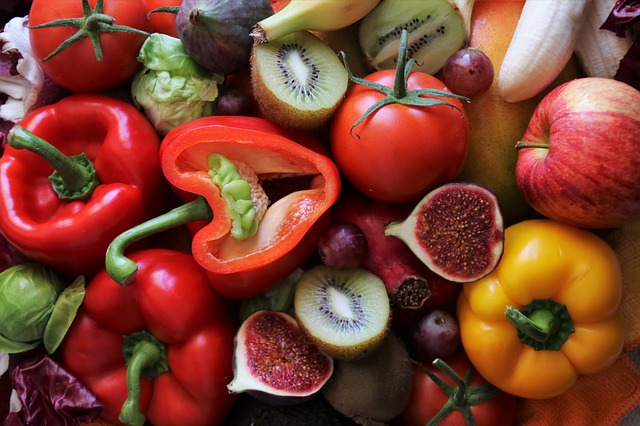Vitamin C that you want to take consciously for beauty and health. I think many people are deficient because their eating habits are biased. It’s difficult to keep an eye on your daily diet because you’re busy with work, housework, and childcare. So this time, I will introduce vegetables rich in vitamin C and recommended ways to take them.
Vitamin C, a water-soluble vitamin, dissolves in the broth and is lost when boiled. Also, because it is sensitive to heat, it is easily lost by heating. To take vitamin C efficiently, it is recommended to shorten the time of contact with water and heat, or to make a soup that can be drunk with the broth. Foods high in vitamin C include fruits (especially citrus fruits and strawberries), vegetables, and potatoes. Vitamin C is easily soluble in water and sensitive to heat, so it’s best to eat it raw as fresh as possible. The point is not to wash it too much, boil it too much, or expose it to water too much.
Foods with vitamin c
Fruits and vegetables are the best sources of vitamin C. You can get the recommended amount of vitamin C by eating a variety of foods, including:
- Citrus fruits (such as oranges and grapefruits) and their juices, red peppers, green peppers, kiwifruit. These contain a lot of vitamin C.
Other fruits and vegetables that contain vitamin C. Broccoli, strawberries, cantaloupe melons, baked potatoes (baked potatoes), tomatoes, etc. - Fruits and vegetables fortified with vitamin C. To see if Vitamin C is added to your food, check the product label.
- The amount of vitamin C in foods may decrease with long-term storage and cooking. Steaming or using a microwave may reduce cooking losses. Fortunately, many of the best sources of vitamin C, such as fruits and vegetables, are usually eaten raw.
Foods high in vitamin C
Vitamin C is mainly abundant in vegetables, fruits, potatoes and sweet potatoes. The amount of vitamin C contained in 100g is summarized below.

- Red bell pepper: 170mg
- Yellow pepper: 150mg
- Broccoli: 120mg
- Kiwifruit (yellow): 140mg
- Rape blossoms: 110 mg
- Kiwifruit (green): 69mg
- Strawberries: 62mg
- Navel: 60mg
- Lemon juice: 50mg
- Cabbage: 41 mg
- Potato: 35 mg
- Sweet potato: 29mg
How much should I take
- If it is insufficient, resistance to cold and bacteria will decrease, making it more susceptible to diseases such as colds, and bone growth will be insufficient. Scurvy, known as vitamin C deficiency, is caused by the loosening of bonds between cells due to the inability to make collagen. It is a disease in which blood vessels and joints are weakened, causing bleeding and joint pain in various parts of the body such as the gums.
- On the other hand, it is generally said that there is no harmful hypervitaminosis because the absorption rate of vitamin C decreases even if it is ingested excessively and the rest comes out of urine. However, it should be noted that drugs and supplements have been reported to have gastrointestinal effects such as nausea, diarrhea, and abdominal pain, and people with renal function problems are at increased risk of kidney stones. Please try to use it properly.
Use dietary supplements when you tend to run out
If you have a high need for vitamin C or are apt to be deficient in your diet and cannot get vitamin C from your diet, we recommend using dietary supplements
Summary
Vitamin C consumption varies depending on your diet and living environment. It is taken from vegetables and fruits, but if it is difficult, try dietary supplements as well. Dietary supplements that contain vitamin C may also contain other vitamins and minerals. For children and pregnant women, please check the caution label as some ingredients should be avoided in large amounts.

